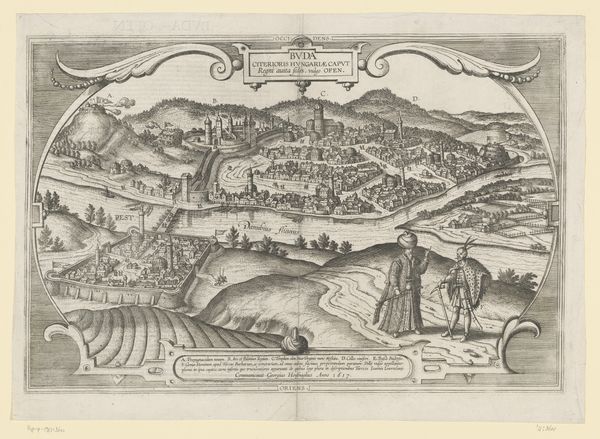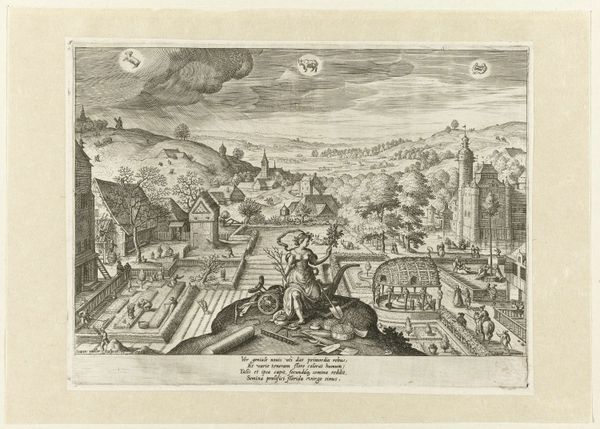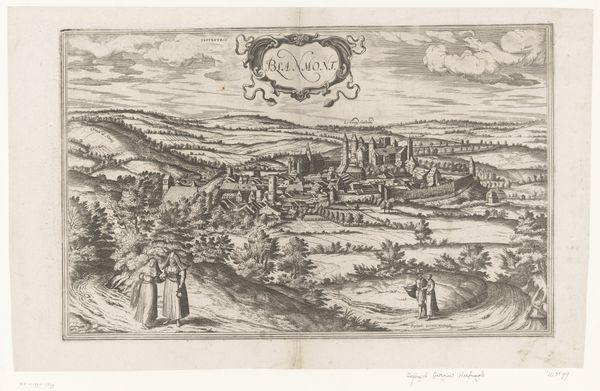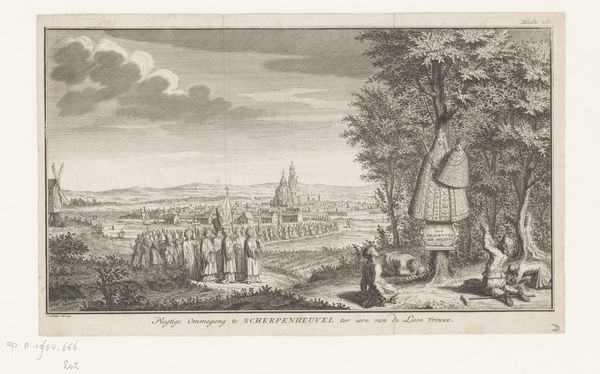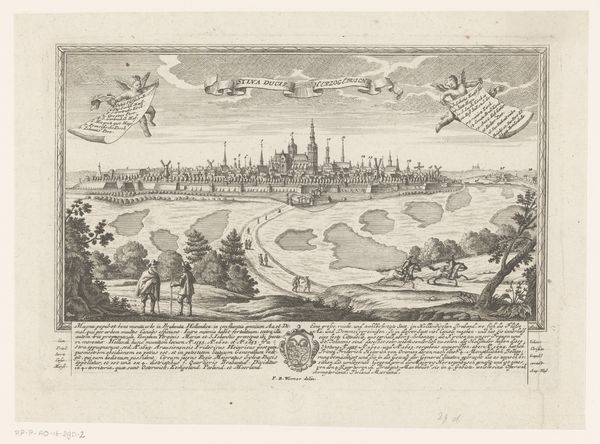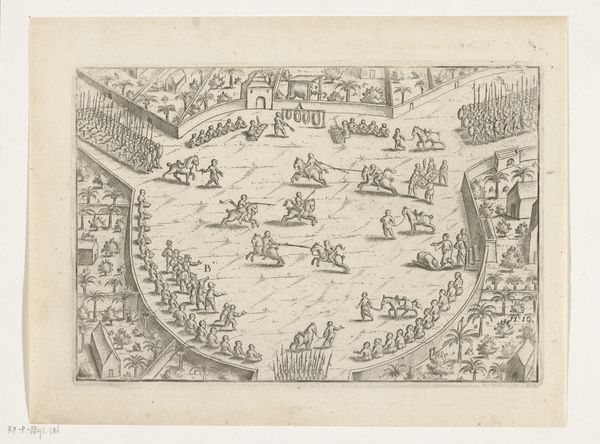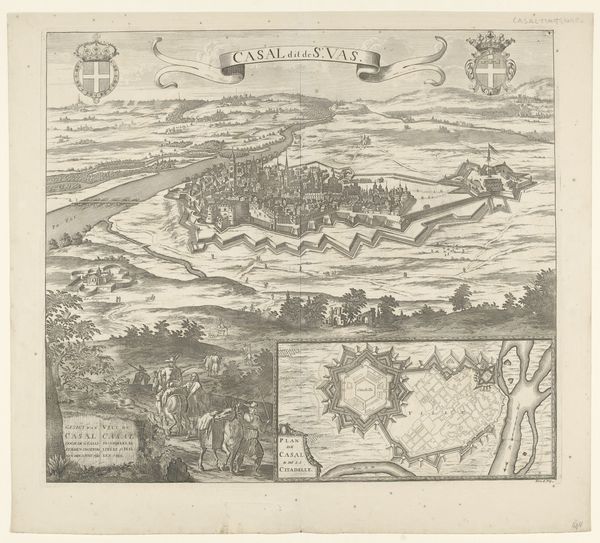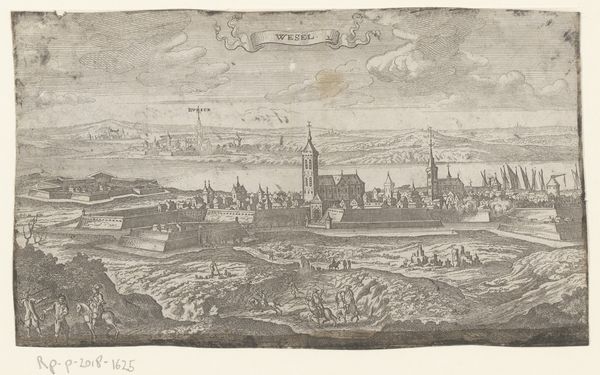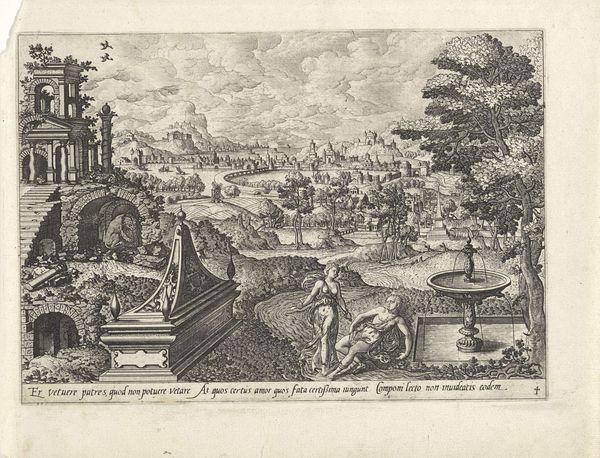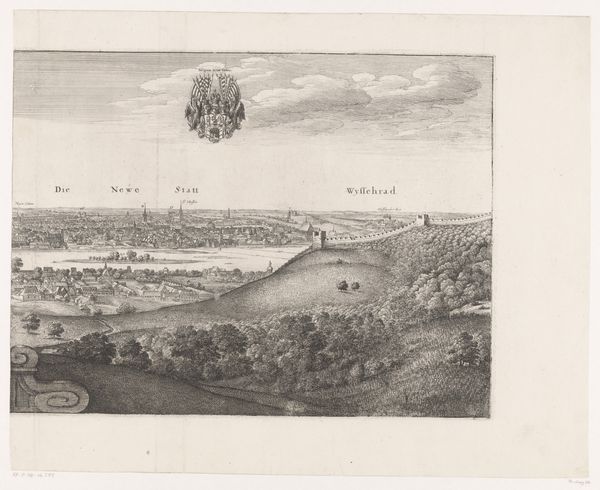
drawing, print, engraving
#
drawing
#
baroque
#
pen drawing
# print
#
landscape
#
cityscape
#
northern-renaissance
#
engraving
Dimensions: height 324 mm, width 495 mm
Copyright: Rijks Museum: Open Domain
Curator: This engraving from around 1617, titled "Gezicht op Polná," comes to us from the hand of Joris Hoefnagel and provides a fascinating birds-eye perspective. Editor: Immediately, I'm struck by the incredible detail rendered in monochrome. The artist’s technical skill here is outstanding – how does one even begin to articulate the formal relationships? The sheer depth of field, from those figures in the foreground to the distant hills, creates a captivating sense of space and clarity of form. Curator: Indeed, let's consider the engraving process itself. The meticulous labor involved in transferring such a detailed view onto a copper plate! Hoefnagel’s workshop surely employed skilled artisans, demonstrating the collaborative nature of printmaking at the time. Think about the material reality: the quality of the ink, the paper used for printing. This speaks volumes about the consumption and circulation of images during the early 17th century. Editor: Absolutely. Observe how the lines of the ploughed fields lead the eye toward the town. This creates a visual rhythm that guides the viewer through the image's different zones: from cultivated land to dense urban setting, leading the viewer’s eye towards that towering church spire which acts almost as the composition's key structural feature. Note the almost scientific objectivity: everything seems carefully and meticulously delineated, conveying a sense of ordered structure and reason that has its historical context in that time’s new understanding of perspective, distance, and accurate visual presentation. Curator: And it’s also important to remember the context! These cityscapes were commissioned by wealthy patrons eager to document and celebrate their territories and power. It reflects a specific societal need, where these prints could have served multiple purposes, from spreading knowledge of distant locales, to providing plans for fortification and defense. These images also played a vital role in shaping early modern European identity through the dissemination of printed imagery. Editor: Precisely. I notice now how that tree on the right acts as a visual counterweight to the city, grounding the overall aerial effect. Looking closely I also note a great precision in the representation of light and shade that creates texture and enhances spatial relationships. I see how the artist makes great use of varied hatching patterns and linear perspective to enhance an emotional reaction to that setting, which is also a historical artifact of itself. Curator: Studying such prints enables us to examine production methods and trace the cultural meanings that artworks hold! Editor: And, in doing so, better interpret their significance in relation to the artwork’s inherent visual vocabulary.
Comments
No comments
Be the first to comment and join the conversation on the ultimate creative platform.
